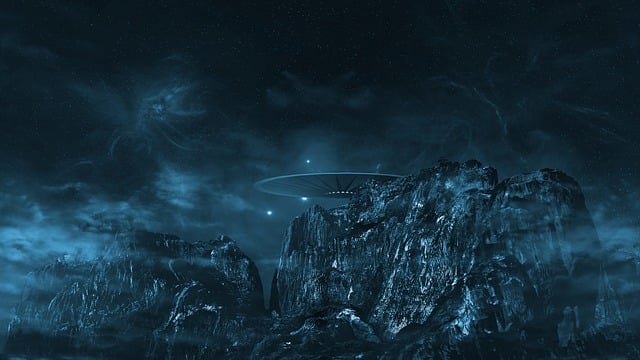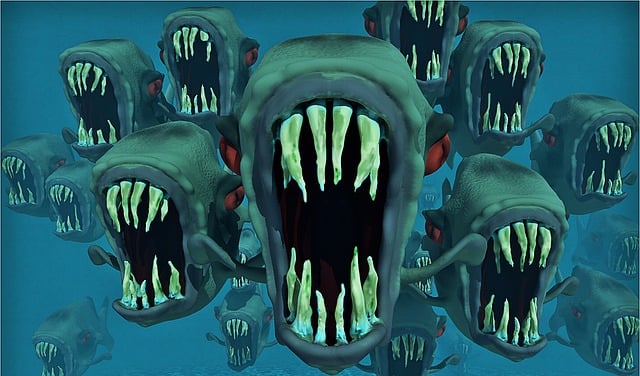Unveiling Wisdom Teeth Removal’s Impact on Jawline: Exploring the Facts
Welcome to our informative article on the fascinating topic of wisdom teeth removal and its impact on your jawline. Oftentimes, the removal of these mysterious molars has been surrounded by confusion and questions. What exactly do these teeth do? Why do we need to remove them? And most importantly, how does their removal affect the overall appearance of our jawline? In this friendly exploration, we aim to uncover the facts surrounding wisdom teeth removal, shedding light on the relationship between this dental procedure and the structure of your jawline. So, join us as we delve into this fascinating subject and navigate the realm of wisdom teeth, addressing common concerns while empowering you with the knowledge you need to make informed decisions regarding your oral health and aesthetics.
1. Understanding the Role of Wisdom Teeth in Dental Health
Wisdom teeth, also known as third molars, are the last molars to emerge in the back of your mouth. They usually make their appearance between the ages of 17 and 25, a time when we are considered wiser than our younger years. While these teeth once served a purpose in our ancestors’ diets, their role in modern dentistry is not as essential.
is important for maintaining a healthy smile. Here are a few key points to consider:
- Impaction: Wisdom teeth commonly become impacted, meaning they don’t have enough room to fully emerge or grow straight. This can lead to various problems, including pain, infection, and damage to neighboring teeth.
- Crowding: As the wisdom teeth develop, they may exert pressure on existing teeth and cause crowding. This can affect the alignment of your smile, requiring orthodontic treatment to resolve.
It is recommended to consult with a dentist to assess the condition of your wisdom teeth. Based on X-rays and careful examination, your dentist can determine if extraction is necessary or if your wisdom teeth can be monitored for potential issues.

2. The Science behind Wisdom Teeth Formation and Eruption
Wisdom teeth, also known as third molars, are the last teeth to develop in our mouths. They usually appear between the ages of 17 and 25. The process of wisdom teeth formation and eruption is an interesting one that involves the interaction of genetics, evolution, and jaw development.
Here are some key points to understand the science behind wisdom teeth:
- Genetics play a significant role in determining whether an individual will develop wisdom teeth or not. Some people inherit genes that code for smaller jaws, making it less likely for wisdom teeth to have enough space to erupt properly.
- Evolutionary theory suggests that our ancestors had larger jaws and more teeth. As our diets have evolved over time, our jaws have become smaller, which often leads to complications when it comes to wisdom teeth eruption.
- Wisdom teeth may become impacted, meaning they are unable to fully emerge from the gums due to lack of space. This can result in pain, infection, or damage to other teeth. In such cases, extraction is often recommended.
Understanding can help us make informed decisions about our dental health. Regular check-ups with a dentist can ensure timely management and prevent potential complications. If you experience any discomfort or notice changes in your mouth, it’s always wise to consult a dental professional.

3. Uncovering the Hidden Impact of Wisdom Teeth on Jawline Alignment
Wisdom teeth, also known as third molars, are the last set of teeth to emerge in the back of the mouth. While they were once necessary for our ancestors to chew tough foods, they are now considered vestigial organs, often causing more harm than benefit. One hidden impact of wisdom teeth is their potential to affect the alignment of the jawline, leading to various dental and oral health issues.
The following are some important points to consider regarding this hidden impact:
- Crowding: Wisdom teeth can cause overcrowding as they erupt, pushing against existing teeth and shifting them out of alignment.
- Misalignment: Sometimes, there may not be enough room for wisdom teeth to fully emerge, causing them to become impacted. This can lead to them growing at an angle or sideways, causing further misalignment of the jaw and disrupting the bite.
- Impacted teeth: Impacted wisdom teeth can also create pockets in the gums, increasing the risk of food particles and bacteria getting trapped, which can result in infection and gum disease.
It is essential to consult with a dentist or oral surgeon to assess the impact of wisdom teeth on your jawline alignment. They can determine whether the extraction of these teeth is necessary to prevent potential complications and maintain optimal oral health.

4. What Happens When Wisdom Teeth Don’t Have Enough Space to Grow?
When wisdom teeth don’t have enough space to grow, it can lead to a variety of dental issues. These third molars usually appear between the ages of 17 and 25, but when there is insufficient room in the mouth, they become impacted. Impacted wisdom teeth can cause discomfort, pain, and potential complications if left untreated. Here are a few things that can happen when these teeth lack the space they need:
- Crowding: Nearby teeth can become overcrowded as wisdom teeth grow improperly, causing misalignment and shifting.
- Pain and swelling: Impacted wisdom teeth can lead to pain, swelling, and inflammation in the surrounding gum tissue.
- Infections and tooth decay: Food particles and bacteria often get trapped around impacted wisdom teeth, increasing the risk of infections and decay.
It’s important to monitor the growth of wisdom teeth and consult with a dentist if any signs of discomfort or pain are experienced. Through a thorough examination and X-rays, your dentist can determine the best course of action, which may include extraction or other necessary treatments. Early intervention can prevent complications and maintain oral health.

5. Debunking Common Myths about Wisdom Teeth Removal
While wisdom teeth removal is a common procedure, it’s not uncommon for several myths and misconceptions to circulate around it. Let’s debunk some of these myths to help you better understand the truth behind wisdom teeth extraction:
- Myth 1: Everyone needs to have their wisdom teeth removed.
- Myth 2: Wisdom teeth removal is extremely painful.
Truth: Not everyone needs their wisdom teeth removed. If these teeth grow in properly, don’t cause any pain or dental issues, and can be easily cleaned, they can be left in. However, for many people, impacted or misaligned wisdom teeth can lead to infections, overcrowding, and other complications, making extraction necessary.
Truth: Thanks to modern anesthesia and advancements in dental techniques, wisdom teeth removal is typically a painless procedure. Your dentist or oral surgeon will ensure you are properly numbed, and you may even opt for sedation to enhance your comfort during the procedure. Post-surgery, any discomfort can be managed with prescribed pain medications and following care instructions provided by your dental professional.
6. How Wisdom Teeth Extraction Can Affect Your Jawline Shape
Wisdom teeth extraction is a common dental procedure that can significantly impact your jawline shape. Here’s how:
Jaw Misalignment: If your jaw is too small to accommodate wisdom teeth, they can cause overcrowding, pushing your other teeth forward or sideways. This misalignment can alter the natural symmetry of your jawline and affect your facial structure.
Changes in Facial Contour: Removal of wisdom teeth can lead to changes in the shape of your face. Over time, impacted or partially erupted wisdom teeth can cause the jawbone to change shape, resulting in an uneven or sagging jawline. By extracting these teeth, you can restore the natural contour of your face and maintain a harmonious facial appearance.
7. Exploring the Connection between Wisdom Teeth Removal and Facial Structure
Wisdom teeth removal is a common dental procedure that involves extracting the third molars at the back of your mouth. However, did you know that this seemingly routine procedure can have an impact on your facial structure? Let’s delve into the connection between wisdom teeth removal and facial structure to understand more about this fascinating topic.
1. Altered jaw shape: When wisdom teeth erupt, they can sometimes cause overcrowding in your mouth. This leads to your other teeth shifting, resulting in changes to your jaw shape. Removing these problem-causing molars can help restore proper alignment and alleviate the pressure on nearby teeth, which can ultimately help maintain your facial structure.
2. Prevention of bone loss: Wisdom teeth can be challenging to clean, often leading to tooth decay and infection. These oral health issues can affect the bone tissue surrounding your teeth. By removing problem wisdom teeth, you minimize the risks of bone loss in the jaw, which can help preserve the overall shape and structure of your face.
8. Can Wisdom Teeth Removal Lead to Improved Facial Symmetry?
Removing wisdom teeth can indeed lead to improved facial symmetry. Wisdom teeth, also known as third molars, are the last set of teeth to come in at the back of the mouth. For many individuals, these teeth may not have enough space to fully emerge, causing them to become impacted or grow at an angle. When impacted, they can push against the surrounding teeth, leading to crowding and misalignment.
By removing wisdom teeth, it can prevent potential orthodontic issues and promote better facial symmetry. Here are a few ways wisdom teeth removal can enhance your facial appearance:
- Reduced Crowding: Removing wisdom teeth creates space in the mouth, allowing the other teeth to align properly and reducing overcrowding.
- Improved Jaw Alignment: Impacted wisdom teeth can disrupt the balance of the jaw, leading to an asymmetrical appearance. Removal of these teeth can restore the natural alignment of the jaw.
- Prevention of Shifting: Wisdom teeth that push against adjacent teeth can cause them to shift, which can alter facial symmetry. Extraction prevents this shifting from occurring.
Consulting with a dental professional is crucial to determine whether wisdom teeth removal is necessary for your specific case. They can assess your oral health and provide personalized advice to help you achieve a more harmonious facial profile.
9. The Key Factors to Consider When Deciding on Wisdom Teeth Extraction
Wisdom teeth extraction, also known as third molar extraction, is a common dental procedure that many people undergo. If you are considering getting your wisdom teeth removed, there are several key factors you should take into consideration. First and foremost, consult with your dentist or oral surgeon to assess the condition of your wisdom teeth and evaluate whether extraction is necessary. They will consider factors such as the positioning of your teeth, their impact on your oral health, and any potential risks or complications associated with the extraction process.
Another important factor to consider is the timing of the extraction. In most cases, it is recommended to remove wisdom teeth during the late teenage years or early twenties. This is because at this stage, the roots of the teeth are not fully developed, making the extraction procedure easier and recovery faster. However, each person’s individual circumstances may vary, so it’s essential to have a thorough discussion with your dentist to determine the most appropriate timing for your situation. Additionally, if you’re experiencing symptoms such as pain, swelling, or infection in the area where the wisdom teeth are erupting or impacted, extraction may be the best course of action to prevent further complications.
- Consult with your dentist or oral surgeon to evaluate whether extraction is necessary.
- Consider the positioning, impact on oral health, and potential risks of your wisdom teeth.
- Timing is crucial, with the late teenage years or early twenties often being recommended for extraction.
- Discuss any symptoms you may be experiencing with your dentist to determine the need for extraction.
Remember, the decision to extract your wisdom teeth should always be made in consultation with your dental professional. They will provide you with personalized advice based on your particular circumstances. By considering these key factors and seeking professional guidance, you can make an informed decision about wisdom teeth extraction and maintain a healthy smile for years to come.
10. Tips for a Smooth Recovery after Wisdom Teeth Removal
Recovering from wisdom teeth removal can be a bit challenging, but with these handy tips, you’ll be well on your way to a smooth and comfortable recovery:
- Follow your dentist’s instructions: Your dentist will provide you with a set of post-operative instructions. It is essential to follow these carefully to ensure proper healing. This may include taking prescribed medications, applying ice packs to reduce swelling, and avoiding certain foods.
- Take it easy: Rest is crucial for a successful recovery. Make sure to take time off work or school to allow your body to heal properly. During this time, avoid any strenuous physical activities, such as exercising, to prevent any complications.
- Manage swelling and discomfort: After the procedure, some swelling and discomfort is normal. Applying ice packs or cold compresses to the outside of your face can help reduce swelling and pain. Over-the-counter pain relievers, as recommended by your dentist, can also provide relief.
Eat soft foods: Stick to a diet of soft foods and liquids for the first few days after surgery. Opt for nutritious options such as smoothies, soups, applesauce, mashed potatoes, and yogurt. Avoid hard, crunchy, and spicy foods that might irritate the surgical site.
- Maintain good oral hygiene: Keeping your mouth clean is crucial for a smooth recovery. Gently brush your teeth, avoiding the surgical area, and rinse your mouth with warm saltwater periodically to promote healing and prevent infection.
- Avoid using straws: Using a straw can dislodge blood clots and delay the healing process, leading to a condition known as dry socket. It’s best to avoid using straws for at least a week after surgery.
- Stay hydrated: Drink plenty of water to stay hydrated during the recovery period. Hydration promotes healing, helps flush out toxins, and prevents complications such as dry mouth.
Frequently Asked Questions
Q: What are wisdom teeth and why do they need to be removed?
A: Wisdom teeth, also known as third molars, are the last teeth to develop and appear in the mouth. In many cases, they don’t have enough space to properly erupt, leading to a variety of dental issues such as overcrowding, misalignment, infections, and discomfort. Thus, they often need to be removed to prevent these complications.
Q: How does wisdom teeth removal impact the jawline?
A: Wisdom teeth removal can have various effects on the jawline. In some cases, if the teeth are impacted or erupt at an angle, they can cause crowding and shifting of the neighboring teeth, leading to changes in the jawline alignment. By removing the wisdom teeth, the potential for such issues is minimized, allowing for a more balanced jawline.
Q: Can wisdom teeth extraction improve the appearance of the jawline?
A: While wisdom teeth removal primarily focuses on maintaining dental health, improving the appearance of the jawline can be a positive side effect. By avoiding the displacement of other teeth caused by impacted wisdom teeth, it can help maintain a more aesthetically pleasing jawline. However, it’s important to note that the impact on the jawline varies among individuals and should not be considered a guaranteed cosmetic benefit.
Q: Are there any risks associated with wisdom teeth removal that might affect the jawline?
A: Like any surgical procedure, wisdom teeth removal carries some risks. In rare cases, it can cause nerve damage, leading to altered sensation in the jaw, chin, or lips. However, these instances are relatively uncommon. To minimize these risks, it’s crucial to choose a skilled oral surgeon and follow post-operative care instructions diligently.
Q: Does everyone need to have their wisdom teeth removed to maintain a proper jawline?
A: Not every individual needs to have their wisdom teeth removed, as their impact varies. Some people may have sufficient space for the teeth to erupt without causing any issues. Regular dental check-ups and X-rays can help determine whether wisdom teeth removal is necessary to maintain a proper jawline and overall oral health.
Q: Is there an ideal age for wisdom teeth removal to ensure the best impact on the jawline?
A: The optimal age for wisdom teeth removal is usually between the ages of 17 and 25, as the roots are not fully formed yet and the surrounding bone tends to be less dense. At this stage, complications and the potential impact on the jawline can be minimized, leading to a smoother recovery and overall better results.
Q: How long does it take to recover from wisdom teeth removal, and will it affect the jawline during the healing process?
A: Recovery time varies depending on factors such as the difficulty of the extraction, the number of teeth removed, and individual healing abilities. Generally, the initial healing period lasts about a week, during which there may be swelling and discomfort. Following proper care and guidelines provided by the oral surgeon can help promote healing and minimize any potential impact on the jawline.
Q: Are there any alternatives to wisdom teeth removal if one wants to preserve their jawline?
A: In some cases, when wisdom teeth are erupting correctly and not causing any issues, they may not need to be removed. Regular dental check-ups and consultations with a dental professional can help determine if alternative solutions such as orthodontic treatment or monitoring the teeth’s progress will suffice in preserving the jawline. However, each situation is unique and should be evaluated on an individual basis.
Q: How can I find a qualified oral surgeon to perform wisdom teeth removal?
A: To find a qualified oral surgeon, you can seek recommendations from your dentist or ask for referrals from friends and family. It’s important to ensure the surgeon is properly licensed and experienced in performing wisdom teeth extractions. Reading online reviews and consulting multiple professionals for their opinions can also help in selecting the right oral surgeon for your needs.
Q: Is wisdom teeth removal typically covered by insurance?
A: The coverage for wisdom teeth removal varies among insurance providers and depends on individual insurance plans. While some dental insurance plans may partially or fully cover the cost of wisdom teeth removal, others may categorize it as a non-covered procedure. It’s always advisable to contact your insurance company or review your policy’s terms regarding dental extractions to determine your level of coverage.
Conclusion
In conclusion, understanding the impact of wisdom teeth removal on your jawline is crucial for making informed decisions about your oral health. We have unraveled the facts surrounding this common dental procedure, shedding light on its effects and dispelling any misconceptions.
Remember, although wisdom teeth removal may not directly influence the shape of your jawline, it can indirectly contribute to its long-term well-being. By eliminating potential overcrowding, misalignment, and potential complications, you are taking proactive measures to maintain a healthy and confident smile.
Consulting with your dentist or oral surgeon is essential for determining whether wisdom teeth removal is necessary or beneficial for you. They possess the expertise to assess your specific situation and provide personalized advice that aligns with your needs.
While the prospect of undergoing any dental procedure can be daunting, rest assured that modern advancements in anesthesia and surgical techniques have made wisdom teeth removal relatively comfortable and safe.
Additionally, maintaining good oral hygiene practices such as regular brushing, flossing, and visiting your dentist for check-ups will aid in managing the impact of wisdom teeth on your jawline and overall oral health.
Knowledge is power, and delving into the facts surrounding wisdom teeth removal has empowered you to approach the subject with confidence. We hope this article has been a helpful guide, shedding light on the impact on your jawline and equipping you with the necessary information for making well-informed decisions about your oral health.
Remember, your dazzling smile starts with a healthy foundation. So, take charge of your oral health, stay informed, and enjoy a radiant smile for years to come!






